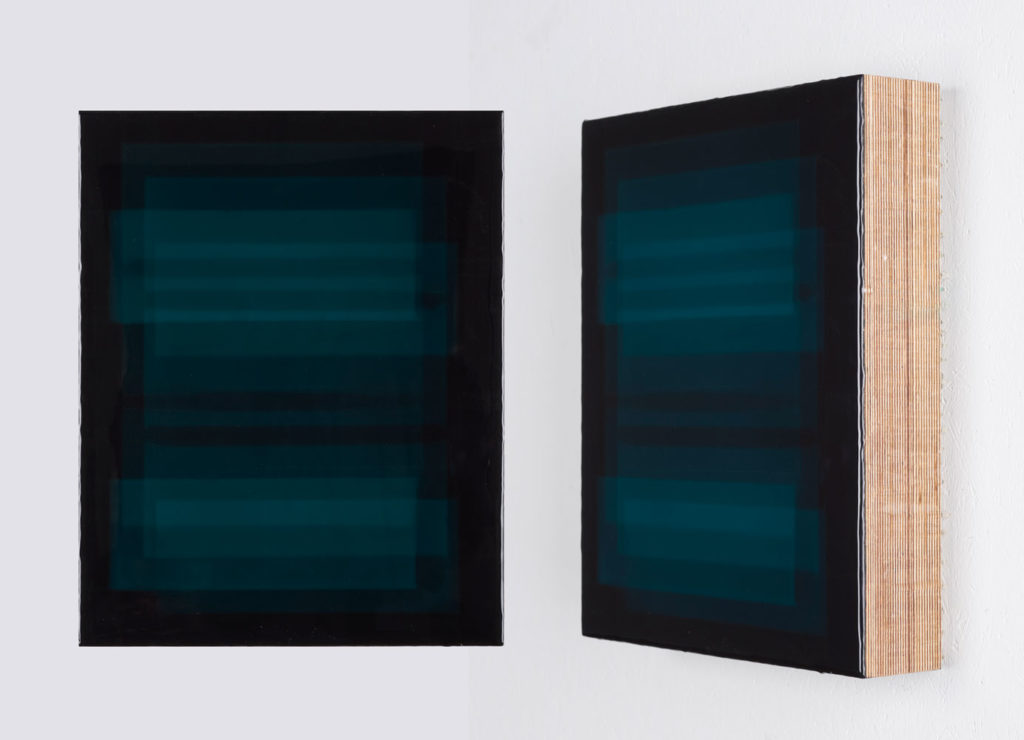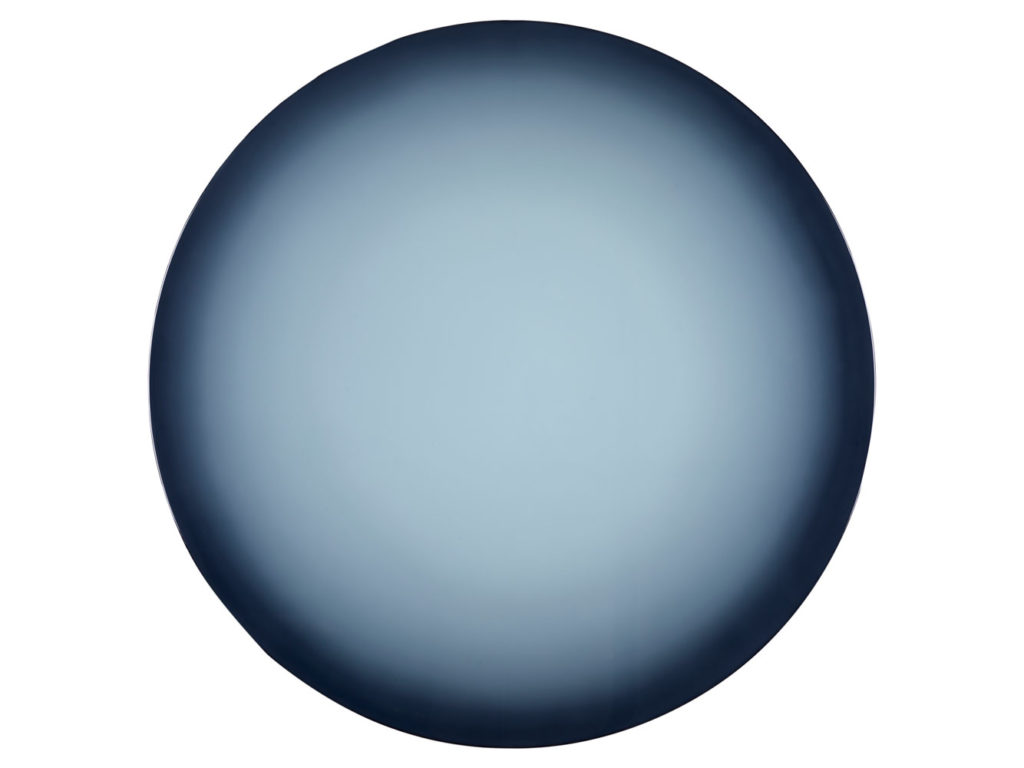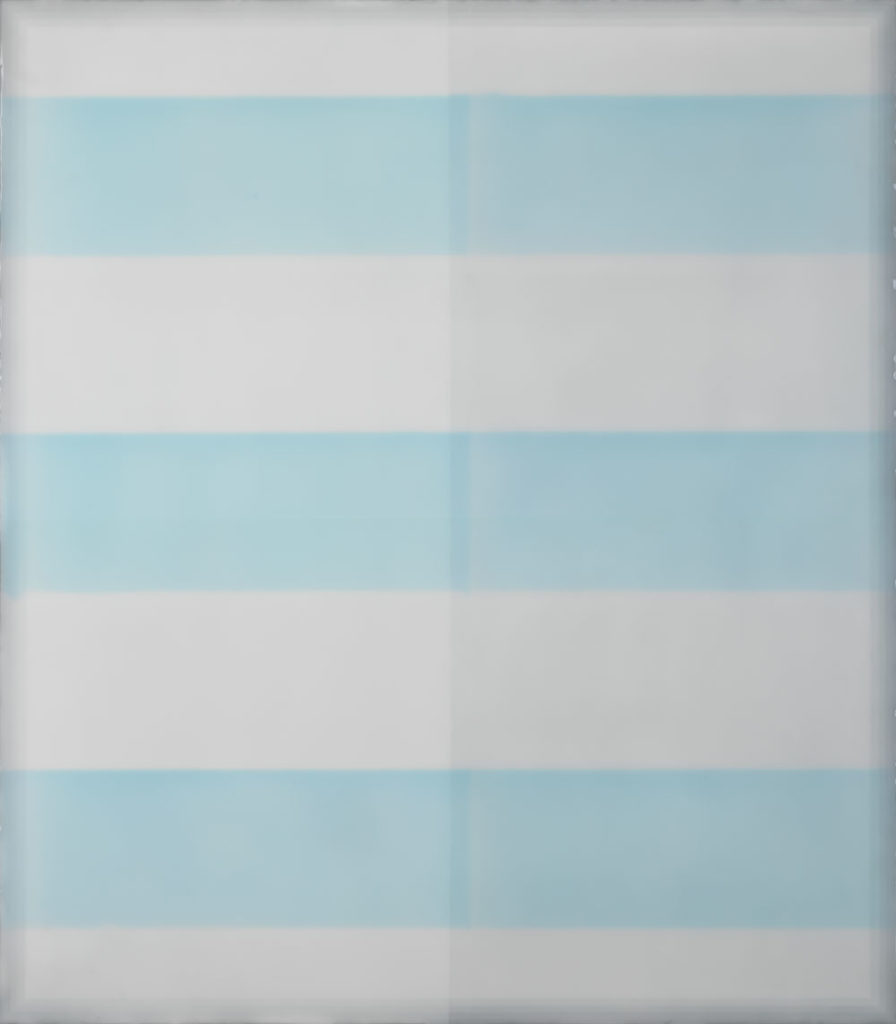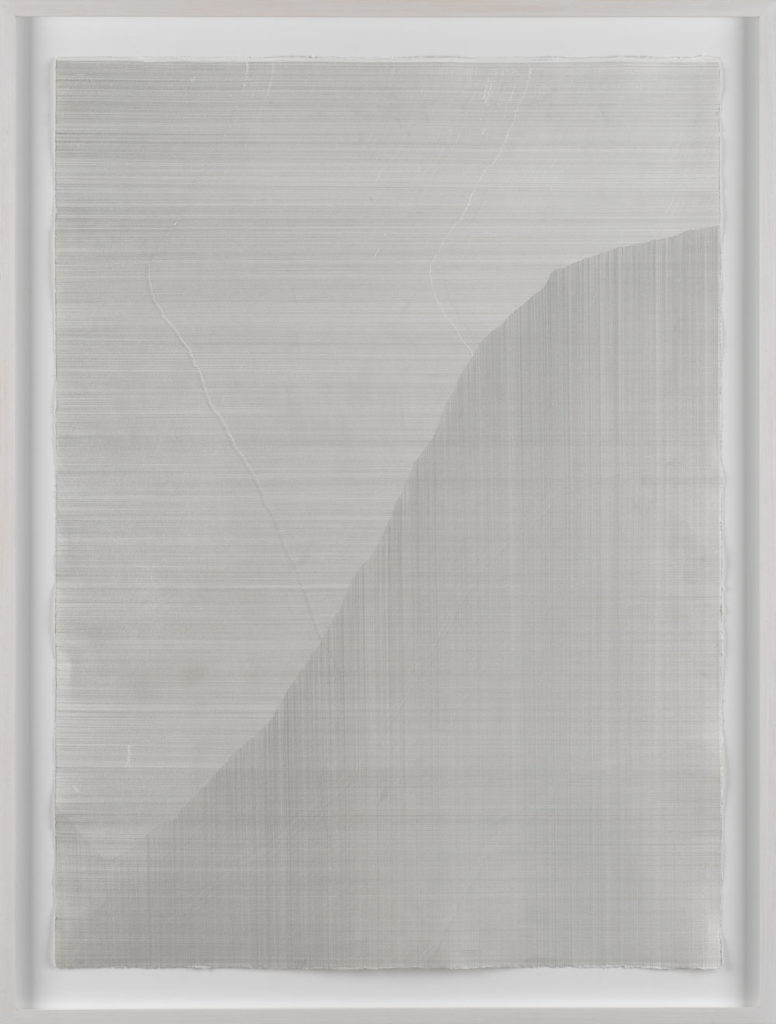The Paintings of German Artist Dirk Salz Will Play With Your Perception


Artnet Gallery Network

Accurately capturing the effect of Dirk Salz’s paintings might be impossible with words or pictures. This is the case for most painting, of course, but it’s particularly true for a series of reflective works by the 57-year-old German artist, which feature dozens of layers of synthetic resin mixed with pigment on their surface. They have a peculiar effect on the viewer’s sense of space and depth.
The effect is “otherworldly,” says Pier Stuker, director of bromer kunst in Bern, Switzerland. The gallery has represented Salz for just over a year now. “It’s the combination between the depth created through the multiple layering of resins and the highly reflective surfaces that renders his works this strange and otherworldly character. You have to imagine a painting with a depth that allows you to lose yourself in it, and a mirroring surface that pushes you out at the same time.”
Yet not all of Salz’s paintings rely on this effect. Another body of work, still minimal in subject, feature a matte finish. According to Stuker, they “induce a meditative state of mind through the depth, which is still there, but it is now combined with a soft texture that looks like a foggy veil and generates, after a prolonged view, a feeling of vibration.”
Stuker sees him as an artist whose time has come. “Salz’s use of materials inspires spectators to slow down, think, and feel—something very much needed in today’s society,” the gallerist says.

Dirk Salz, # 2397 (2018). Courtesy of the artist and bromer kunst.
Salz was born 1962 in Bochum, Germany, to an artistic family. Through his childhood and high school, he grew up painting, drawing, and studying art history. After graduating, he took another route, joining an engineering college program and working in IT for an insurance group years thereafter. Yet he never gave up painting or drawing, and by the late ’90s he had enveloped himself in a community of creatives and was pursuing art seriously.
It was during this time, the artist explains, that he went from painting pictures of nature to making more abstract paintings that conveyed a “feeling of nature.”
“From a more painterly perspective it became clear that I’m mostly interested in the analysis of transparency and the impact of color and relations of color as well as relations of line and space,” Salz tells artnet News. “This way was mainly influenced by American Expressionists like Barnett Newman, Mark Rothko, and Ad Reinhardt, while my tendency to analyze and check the borderlines of paintings in deference to objects was influenced by the work of Blinky Palermo and Imi Knoebel.”

Dirk Salz, # 2200 (2017). Courtesy of the artist and bromer kunst.
Since then, Salz has continued to make minimalist work with an increasingly rigorous formal sensibility, and has shown in solo shows around Europe and the US. His paintings, though two-dimensional, have a sense of depth and gradated color that recalls Light and Space artists of Southern California, while his drawings—which are based on his painting work—have a conceptual bent.
Indeed, despite their subtlety and deceptive simplicity, Salz’s works recalls any number of art historical touchstones.
“I think it would be wrong to place him in a single artistic context,” says Stuker. “[Salz’s] works combine features from very different movements such as Op Art, concrete art, Minimalism, or Abstract Expressionism. In today’s hyper-heterogeneous artistic landscape you could find a wide array of references, and yet Dirk’s oeuvre is very unique. For instance, his matte works create a feeling of blurriness that remind me very much of Gerhard Richter, but in Salz’s works what is hidden behind the veil is a minimal abstract painting, sparking a whole new range of thoughts.”

Dirk Salz, <i.# z166 (2016). Courtesy of the artist and bromer kunst.
For the artist himself, the question is as much about human nature as it is about historical context.
“My entire work is a kind of philosophical analysis. It’s all about perception,” Salz says. “I’m tracing phenomena that are able to touch strings inside of us, be it by creating ambiguous views, by intentionally connecting contradictions, or by creating phenomena of light, color, and space.”